Birthstones by the Month
One of the March Birthstones is Aquamarine
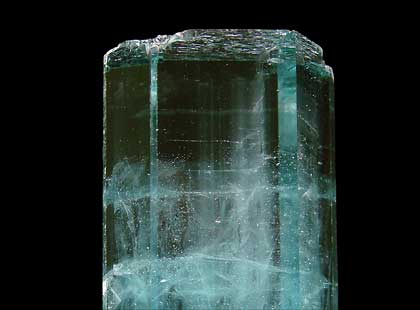
March birthstone Aquamarine
The aqua blue color of aquamarine is attributed to Fe2+. The Fe3+ ions produce golden-yellow color and when both Fe2+ and Fe3+ are available the color is a darker blue as in maxixe. [1]
Aquamarine Facts
Aquamarine is one the March birthstones. Aquamarine (from Latin: aqua marina, "water of the sea") is a light blue or turquoise type of beryl. Aquamarine includes Beryllium which is a rare element. Pure beryl is colorless, but it is frequently tinted by impurities. There are many possible colors; including green, blue, yellow, red, and white. Aquamarine has bluish green color similar to tropical sea water. It has a hardness of 7.5 or 8.0 which is considerably hard. Hard enough for ornamental jewelry uses. Aquamarine was recognized officially as the state gemstone of Colorado in 1971.
The characteristics of Aquamarine
In geology, aquamarine (beryl) is a mineral composed of beryllium aluminum cyclosilicate with the chemical formula Be3Al2(SiO3)6. The hexagonal crystals of beryl may be very little or range to a number of meters in dimension. Terminated crystals are comparatively uncommon. Pure beryl is colorless, but it is frequently tinted by impurities. (Colors are listed above).
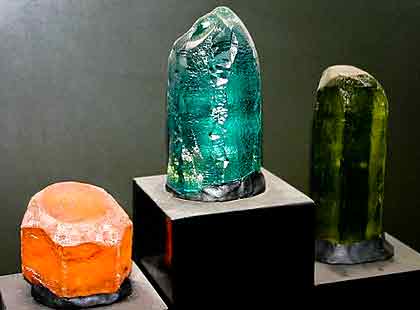
Aquamarine and other beryl
Three varieties of beryl. Morganite, aquamarine and heliodor are shown in this image. [2]
Cut and Clarity for the March birthstone
Aquamarines of high quality are very transparent gemstones. Some aquamarine gemstones can carry inclusions of long hollow rods a common characteristic of the beryl family. Rarely traces of minerals can align to create the cat’s eye effect (chatoyancy) or star effect (asterism) with six striking rays. Cat's eye aquamarine is usually very expensive. Aquamarine gemstones with asterism or “star aquamarine” are remarkably rare and very valuable. When cut properly aquamarine gemstones exhibit a vitreous luster.
Aquamarine gemstones are for the most part well suited for rectangular cuts. The most preferential cut for aquamarine is an emerald step-cut.

Emerald beryl
Emerald is green beryl, its color attributed to trace amounts of chromium and sometimes vanadium. [3]
Is Aquamarine ever treated?
The pale blue color of aquamarine is attributed to Fe2+. Dark-blue maxixe color can be produced in green, pink or yellow beryl by irradiating it with high-energy particles (gamma rays, neutrons or even X-rays).
The darker shades of aquamarine are almost always heat treated as well as lower quality in order to remove the green and yellowish tones and improve the color to be a favorable blue.
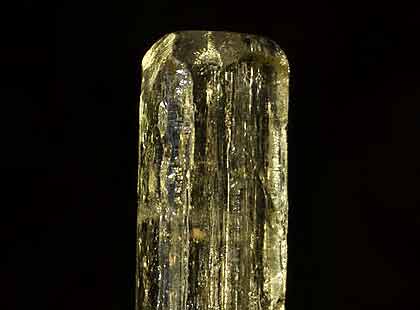
Golden beryl
The March birthstone can be a golden yellow color too. Although it is referred to as golden beryl. [4]
Types of Aquamarine
Aquamarine gemstones come from a family of crystals with chemical similarities but have different impurities.
Emerald
Emerald refers to green beryl. It contains trace amounts of chromium and sometimes vanadium. Most emeralds are highly included, so their brittleness (resistance to breakage) is usually classified as poor. Emerald is a rare and valuable gemstone and, as such, it has provided the incentive for developing synthetic emeralds.
Golden beryl and heliodor
Golden beryl can be pale yellow to a brilliant gold. Dissimilar to emerald, golden beryl typically has very few imperfections. Golden beryl is sometimes used to refer to heliodor but golden beryl refers to pure yellow or golden yellow colors, while heliodor are the greenish-yellow shades of beryl. The golden yellow color is attributed to the Iron (Fe3+) ions. Golden beryl and heliodor are used as gems.
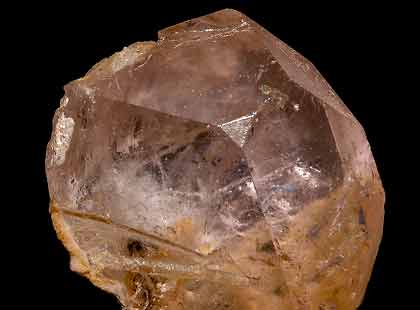
Morganite
Morganite can be heat treated to remove patches of yellow. It is occasionally treated by irradiation to improve pink its color. [5]
Goshenite
Clear beryl with no color is called goshenite. All of the color varieties are caused by impurities and pure beryl is colorless. Various amounts of goshenite are found in almost all beryl deposits. It is most frequently used for gemstones and also used as a source of beryllium.
Morganite
Morganite, "pink beryl", "rose beryl", and "pink emerald" are rare light pink to rose colored gemstone quality variety of beryl. Orange and yellow shades of morganite can also be found. Color banding in morganite is common.
Red beryl
Red beryl or "scarlet emerald" is a red variety of beryl. Red beryl is very rare and has only been found in very few locations.

Red beryl
Red beryl is very rare and can only be found in a few locations. Prices for the best natural red beryl have been as much as $10,000 per carat for finished gemstones. [6]
More about Aquamarine the March birthstone
Aquamarine occurs in most regions which yield common beryl. The deep blue version of aquamarine is called maxixe. Maxixe is regularly unearthed in the country of Madagascar. Its color fades to white when exposed to sunlight or is subjected to heat treatment, though the color returns with irradiation.
In the United States, aquamarines can be unearthed in the Sawatch Range in central Colorado. In Wyoming, aquamarine has been discovered in the Big Horn Mountains. There are also various mines in Brazil
The largest gemstone quality aquamarine was found in Marambaia, Minas Gerais, Brazil, in 1910. It weighed over 110 kg, and its measured 48.5 cm long and 42 cm in diameter.
The largest cut aquamarine gemstone is the Dom Pedro aquamarine. It can be found at the Smithsonian Institution's National Museum of Natural History.
The American Gem Society's March Birthstone page has more information to help you buy from knowledgeable and skilled jewelers and to help you make the most informed buying decision.
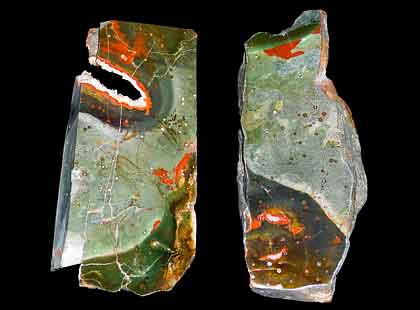
Bloodstone Slabs
Two very colorful pieces of the March birthstone. These specimens have a white crystallized section surrounded by dark red and many green speckled hues. [7]
Bloodstone the Other March birthstone
Bloodstone has been the traditional March birthstone and now shares the March birthstone position with Aquamarine.
Image Attribution
- By Vassil (Own work) [Public domain] via Wikimedia Commons
- By Reno Chris at en.wikipedia [Public domain], from Wikimedia Commons
- By thisisbossi [CC-BY-SA-2.0] via Wikimedia Commons
- By Parent Géry (Own work) [Public domain], via Wikimedia Commons
- By Parent Géry (Own work) [Public domain], via Wikimedia Commons
- By Parent Géry (Own work) [Public domain], via Wikimedia Commons
- Adapted form work By Adam Ognisty (Own work) [CC BY 3.0], via Wikimedia Commons